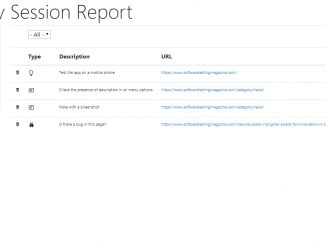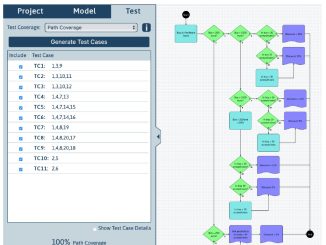Articles, tutorials, videos and tools to perform exploratory software testing in an Agile testing context.
This article presents a list of exploratory testing extensions available for the dominant Chrome browser. The current trend in software testing might be to talk about test automation or artificial intelligence, but in some cases nothing replace the intelligence of a human tester to detect bugs and consequences of irrational user behavior.
‘early Model Based Testing’ (eMBT) is a software testing approach that aims to optimize the test case design phase. The first part of this article presented the exploring and review phase of this approach. This article presents the generation of test cases from the model and their execution.
‘early Model Based Testing’ (eMBT) is a software testing approach that aims to optimize the test case design phase. This is achieved by stimulating communication and collaboration between all project stakeholders to get early feedback and a shared understanding of the requirements in an early stage of the software development life cycle.
This video explains how to improve your exploratory testing through LESS preparation but more creativity! One of the characteristics of exploratory testing is that you do less preparation and that you decide on the spot what your next test case will be.
There is a lot of talk around software testing - who will do it, when it needs to happen, boxes it needs to fit in — yet not enough on the actual testing. This webinar explores one problem in a demo setting using an exploratory testing approach. This means live testing (and live coding) to figure out the options to get a test program covered – for code coverage, for spec coverage and for risk coverage.
James Bach defines Exploratory Testing as “simultaneous learning, test design, and test execution. In other words, exploratory testing is any testing to the extent that the tester actively controls the design of the tests as those tests are performed and uses information gained while testing to design new and better tests.”
Session notes that you use when you adopt an exploratory testing approach can be used to capture more than bugs. They not only serve as a memory of a bug, but a structured testing and learning method can be deduced from the session notes.








